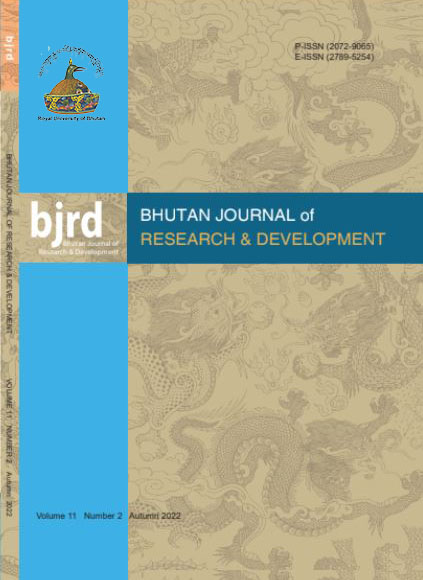Introducing the Design Thinking Approach for Teaching and Learning at Tendruk Central School in Samtse Dzongkhag
DOI:
https://doi.org/10.17102/bjrd.rub.11.2.035Keywords:
Design Thinking, Teaching and Learning, Participatory Design, Co-design, Creative Thinking, Problem Solving.Abstract
Design thinking is a human-centric, iterative, and collaborative approach to solve complex problems. Current study has made an attempt to implement design thinking (DT) as one of the pedagogical means to respond to the need for teaching, learning, and assessment and specifically, the study was intended to explore strategies to implement DT in designing and delivering lessons in the classrooms of a higher secondary school at Samtse. The study was conducted through a participatory design approach which involved co-designing lessons using DT between the researchers and teacher participants. The data for this study was obtained from observations, semi-structured interviews, focus group discussions, and reflections. Eventually, for data analysis thematic analysis and narrative descriptions were used. As such, this study provides information that broadens the understanding of the integration of the DT approach in the classroom in the Bhutanese context, and its impact on the development of skills in students. The findings of the study unveiled that using DT empowers teachers to be innovative in planning learning activities that enable lessons to become more engaging and exciting. Further, the finding also revealed that DT assists students to develop problem-solving skills and creativity.Downloads
Published
How to Cite
Issue
Section
License
Copyright (c) 2022 Kinley Kinley, Ugyen Dorji, Sherab Chophel, Reeta Rai

This work is licensed under a Creative Commons Attribution 4.0 International License.
All articles published in BJRD are registered under Creative Commons Attribution 4.0 International License unless otherwise mentioned. BJRD allows unrestricted use of articles in any medium, reproduction and distribution by providing adequate credit to the authors and the source of publication.



